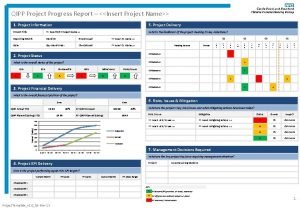Progress Report Nick Shipman 12 March 2021 1











- Slides: 11

Progress Report Nick Shipman - 12 March 2021 1

Summary of work done so far Since getting back after Christmas I have built (with the help of Jan Kovermann) a table top experiment, the ‘Planck’ (it looks like a plank). The Planck is intended to prove the principle of measuring the absolute distance of a very small gap between an anode and cathode without going into contact by making a series of capacitance measurements. I have helped install a new sample holder into DC Spark System II. I have been helping to make some measurements on graphene coated copper on DC Spark System II I have been estimating the difference in the Breakdown Rate between unloaded and loaded structures. I have been learning to use the electrostatic simulation package Maxwell 2

The Planck Rubber Band Cathode Pivot Lever Arm Anode Plank Micrometer Head • Seems to work surprisingly well • Micrometer rod is 76. 6 cm from pivot • Can make ~3. 4 measurements per um • To reduce stray capacitance, except for anode and cathode, only the pivot was made from metal. 3 • Anode is 2. 2 cm from pivot

- planck • The x-axis scale is right but there is an offset. • The gap is ~0 at ~-40 um • The shaded region corresponds to the typical gap distance in the DC Spark Systems • The large variation in capacitance over this region is encouraging. • There is a small amount of hysteresis 4

• The x-axis scale is not right, it’s not even quite linear but it is monotonic! (I will correct this for next time) • The shaded region corresponds to the typical gap distance in the DC Spark Systems • There is a large amount of hysteresis 5

• This graph shows clearly that treating the geometry as a parallel plates is not a good assumption as the 1/d dependence is not observed. • The shaded region corresponds to the typical gap distance in the DC spark systems. • The red line roughly corresponds to theoretical expectation of a parallel plate capacitor with an area equal to that of the diameter of the anode.

Estimating Loaded Breakdown Rates Total Breakdown rate shows a strong E^29 dependance.

Based on the breakdown distributions within the cells… TD 18 Breakdown Location Profile at Different Stages of Processing

And the Unloaded Field distribution within the structure… (from which we work out the loaded field distribution)

We can estimate the loaded breakdown distribution… In both cases there are in total around 25% more breakdowns in the Unloaded case then in the Loaded case. This is the opposite of what had been assumed up till now.

Other Things I have been doing Helping install the new sample holder in the DC spark system II Learning Maxwell • • Things I will be doing • Continue as at the moment but I want to do an electrostatic simulation (with Maxwell) of the anode and cathode to calculate numerically how the capacitance changes with distance and see if this fits the data.
 Nick shipman
Nick shipman Difference between status report and progress report
Difference between status report and progress report Shipman's 4 key questions
Shipman's 4 key questions Poland national anthem lyrics
Poland national anthem lyrics March of progress view
March of progress view Physical progress and financial progress
Physical progress and financial progress Current events quiz
Current events quiz March 5 2021
March 5 2021 How to report project progress
How to report project progress Grade r progress report
Grade r progress report Final year project progress report
Final year project progress report Dissertation progress report yale
Dissertation progress report yale




















